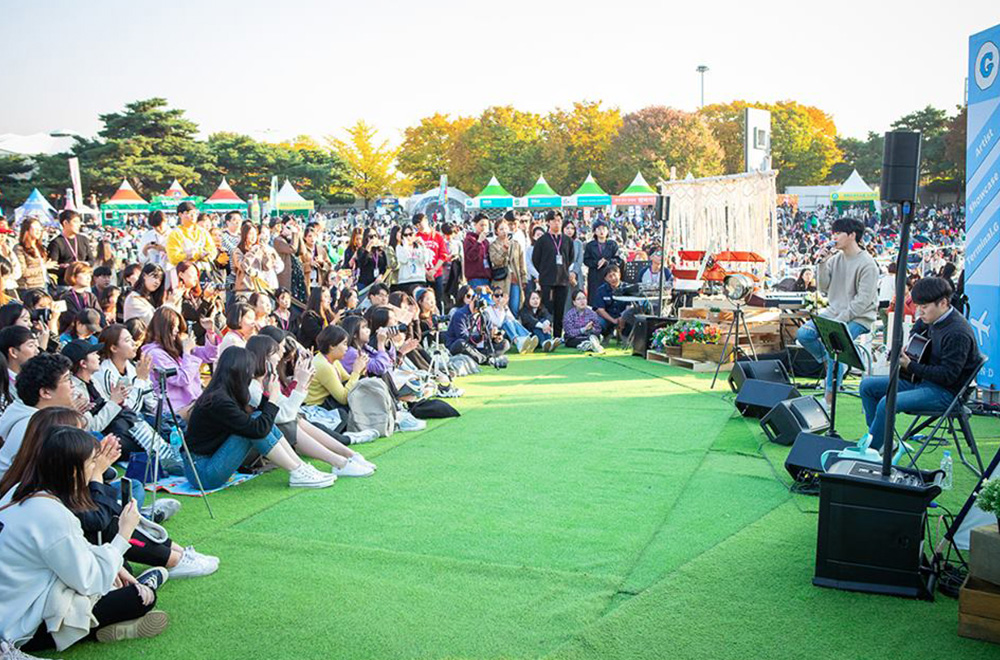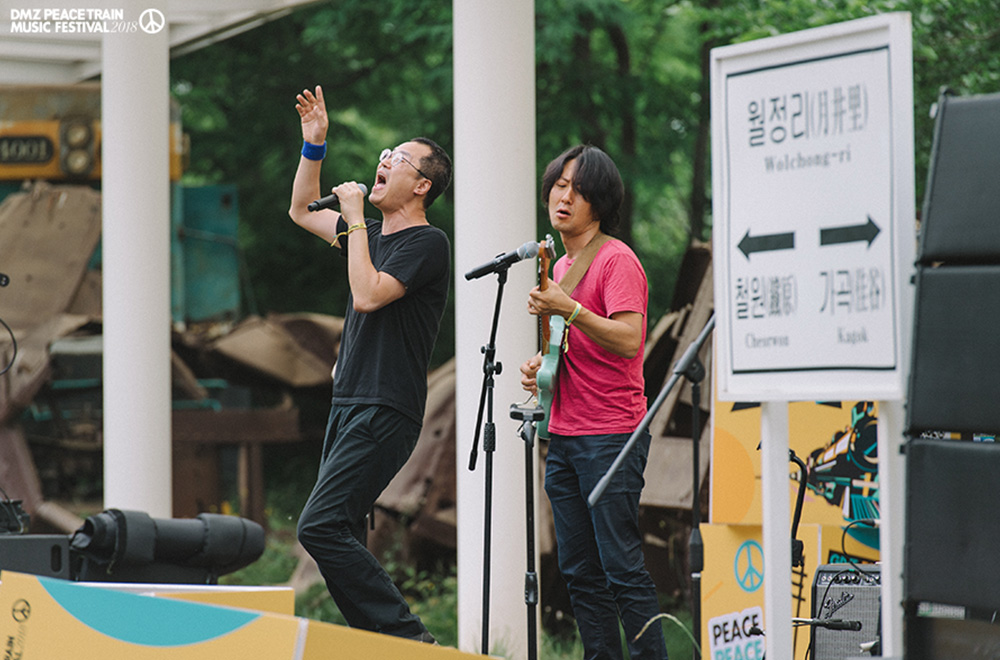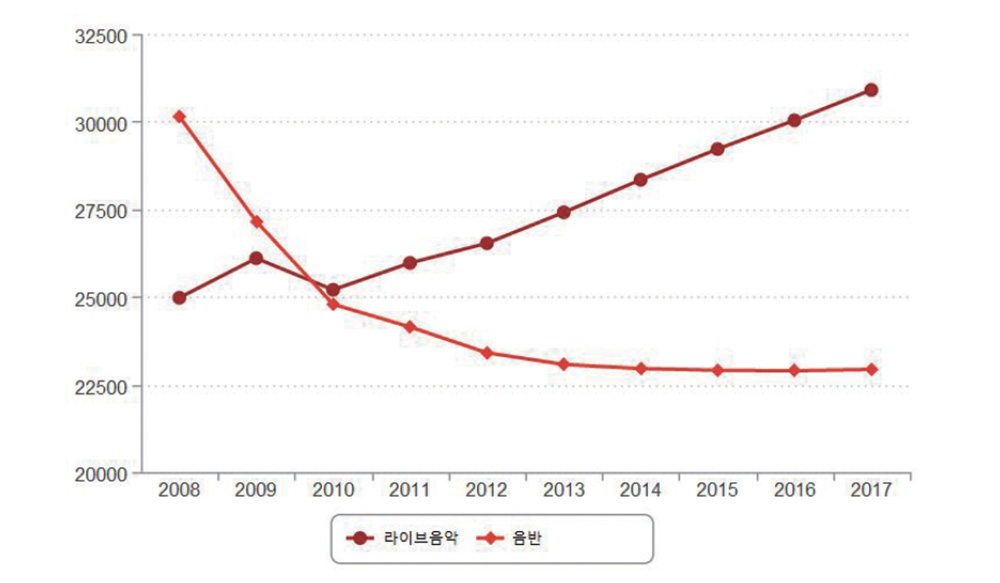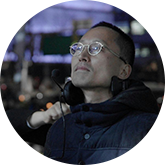By Seo-Jeong Min-gap_popular music opinion leader
Arts Management No. 423_May 9, 2019
The 2017 Music Industry Directory Book, which was published in March 2018, explains that Korea held a total of 55 popular music festivals in 2017. The 2016 Book states that the number was 61. Some festivals may not have participated in the Book’s survey while others were launched in a given year but didn’t continue the following year. Even considering this, the Book makes clear that Korea has had 50 to 60 popular music festivals steadily every year. Excluding the four months of winter, the country organizes seven festivals monthly. In Spring, summer and fall, it organizes a festival every week, sometimes two. Every time experts discuss the history of Korea’s popular music festivals, they mention the nightmare of the *Triport Rock Festival. Even after such a regretful festival, Korea’s popular music festival market has grown in a sustainable manner over the last two decades.
* The Triport Rock Festival was Korea’s largest rock festival that was held in Songdo, Incheon City, Korea in 1999. The festival had drawn great attention by inviting rock stars such as Deep Purple and RATM but most of its performances were cancelled because of the bad weather, disappointing its visitors greatly.
Three Trends of Korea’s Popular Music Festivals:
Localization, Characterization and Homogenization
1) Localization
Growing that way, Korea’s popular music festivals have recently shown three trends: localization, characterization and homogenization. The first trend is localization. The country’s major festivals that have brought a boom in popular music festivals all started in the Seoul Capital Area. The Pentaport Rock Festival takes place in Incheon City, the Jisan Valley Rock Festival, in Icheon City, Gyeonggi Province and the Grand Mint Festival, in Seoul. Today, almost half of Korea’s popular music festivals is still held in the Seoul Capital Area.
Nevertheless, the realm of popular music festivals steadily expanded to the country’s other major cities. In 2016, Gwangju City organized the ACC World Music Festival, Gwangju Nanjang Sound Festival and Gwangju Sound Park Festival. Daegu City held the Daegu International Jazz Festival, Daegu Independent Music Festival, Daegu Folk Festival and Go Well Daeguro Hiphop Festival. Busan City and Ulsan City have numerous festivals and other cities like Gyeongju, Gurye, Daejeon, Yeongam, Jeonju, Jeju, Jecheon, Chuncheon, Paju and Pohang also organize ones. In short, the number of popular music festivals has risen so much that there isn’t any Korean province or city where there is no such musical event. In the past, those living outside the Seoul Capital Area went to the area to visit popular music festivals but today, more and more residents of the capital area head to other areas to attend local events. Last year, many of Seoul’s music fans and hipsters made their way to Gangwon Province to visit the first DMZ Peace Train Music Festival in the province’s Cheolwon County. Meanwhile, others moved toward the south of the country by train to attend the Hwaeom Music Festivals held at Hwaeomsa Buddhist Temple in Gurye County, Jeonnam Province.
 Picnic-like festival Picnic-like festivalⓒFacebook page of the Grand Mint Festival |
 Festival held in Cheolwon County, Gangwon Province Festival held in Cheolwon County, Gangwon ProvinceⓒDMZ Peace Train Music Festival |
2) Characterization
Recent popular music festivals tend to characterize themselves by focusing on specific genres. In the early 2000’s, rock festivals took the lead but today, electronic festivals are stronger. Many of popular music festivals clarify their identity by naming themselves with specific genres: rock, world music, electronic music, jazz, folk and hip hop. In other words, more and more festivals focus on specific genres rather than providing a gift box mixing different genres. Such a phenomenon implies that Korea’s popular music market has grown and become diversified to the point that festivals focused on certain genres can be successful. Korea’s festivals also seem to understand that clarifying their genres help them attract more fans of those genres.
Meanwhile, the localization and characterization of popular music festivals are connected to each other. Visitors of popular music festivals don’t usually go there to see pop stars. It is true that some visitors come to festivals to see as many rock and pop stars as possible but others just want to see musicians of their favorite genres. In addition, many other visitors attend popular music festivals in order to experience something other than music. That experience is about getting out of the area they live in, about visiting space and time they don’t see in their daily life and about displaying oneself as a different person. That is why large-scale, picnic-like outdoor festivals like the Grand Mint Festival, Jarasum Internatioanl Jazz Festival and Seoul Jazz Festival have been successful and large EDM festivals like Global Gathering attracted so many visitors. To these visitors, a popular music festival is a picnic-like experience with great background music. It is a great opportunity for them to share their experiences with others and to display themselves with such experiences on social media. What is important for them is neither a festival’s music nor its list of performers. For them, the essential elements are atmosphere, experience and self-display.
During the DMZ Peace Train Music Festival last year, Seoul’s hipsters gathered together in Cheolwon County, Gangwon Province, which hadn’t drawn any attention as a tourist attraction before. That wasn’t because of the festival’s theme of peace or its famous performers; quite a few visitors came to the festivals to enjoy the festival’s unique atmosphere that combines trendy music and a local area that seems to be far from Seoul’s hipness and hotness.
Those who have already been to so many places in the Seoul Capital Area now turn to other areas and spaces. What is the most special experience for today’s festival visitors is to enjoy an atmosphere made by both space and time, the one that cannot be copied or repeated in a short period of time. Consequently, the Ikseon-dong and Yeonnam-dong areas in Seoul and Jeju Island have become hot places recently. Gangneung City and Sokcho City in Gangwon Province and Korea’s other local areas have become travelers’ favorite areas. Many of the country’s new cafes deliberately have rough finishings whose cement drops are likely to fall.
In this way, popular festivals that effectively combine and utilize a local area’s unique atmosphere and content have been successful. A case in point is the Jarasum International Jazz Festival held in Gapyeong County, Gyeonggi Province. The festival wouldn’t have been successful without Jara Island’s calm and beautiful landscape. The festival has gone beyond sharing the island’s atmosphere. It has developed Jarasum wine and connected itself to Gapyeong County’s products such as pine nut and beef to help visitors further enjoy the attractiveness of the local area, even generating real economic effects. As a result, Gapyeong has become a more familiar tourist attraction and an area hosting numerous music festivals ceaselessly. There are other exemplary cases. The City Festa, a travel festival for urban travelers held in the former provincial government building of Chungnam Province in the old city center of Daejeon, has led visitors to enjoy the unknown attractiveness of Daejeon City. The same is true for the Jecheon International Music & Film Festival. Moreover, Jeonju City in Jeonbuk Province has become Korea’s representative tourist attraction for the young, thanks to its Jeonju International Film Festival and Jeonju Hanok Village (with Korean traditional housing). In particular, the Hanok Village became a hip place. This shows how a local area and its festivals are closely connected to each other. Similar cases are often found in other countries as well. To summarize, a well-made festival contributes to newly branding a local area and to changing it. Since there are still many areas isolated from Korea’s local development, the growth potential of the country’s festivals is still big.
However, such change cannot be made rapidly. It isn’t easy even if planning experts, local residents and local administrative authorities collaborate. There was a period in which there were too many festivals in Korea; at that time, some warned that festivals would work against the development of the country. In fact, many festivals were launched without sufficient preparation and were stopped. Among the country’s popular music festivals as well, many of them took place just a couple of years and never continued. A popular music festival is an event that needs to be organized with minimum budget and people. To achieve economic results and cultural and artistic effects, it takes at least three years of investment and maturing. A festival that is launched without any meticulous preparation and long-term plan makes people think that the festival itself is the cause of problems. So such a festival is criticized as an event wasting taxpayers’ money. However, it is not a festival that is wrong. The problem lies in the administrative and planning system that fails to make a unique festival that differentiates itself from others. The cause of the problems is thus found in organizers’ attitude of trying to achieve something too fast, administrative authorities’ excessive involvement and planners’ lack of capacity.
3) Homogenization
Under these circumstances, it is worth seeing if there aren’t too many similar festivals compared to the overall size of Korea’s popular music market. Indeed, the last trend of Korea’s recent popular music festivals is homogenization. While the number of differentiated festivals increases, it is worrisome to see too many picnic-like festivals mixing genres around pop music and festivals of specific genres. Even if some festivals become successful, a rising number of similar festivals would make people fed up soon and disperse fans. Each festival can be sustainable when it differentiates itself with its own different music, atmosphere and concept. With such differentiation, not only some music stars who are often on festival stage but also other musicians of diverse genres in the Korean pop music scene could draw attention and grow together while local areas could also change. Great examples of this are the Earth Run Festival and Woowa Festival which took place during the Zandari Festa last year. The two festivals, which were held in Sangsu Station and Wausan-ro 29 gil areas (two major spots near Hongik University) created an atmosphere that was different from that of the usually crowded local area. In such a new atmosphere, the festivals naturally made people soak up the music played there. The events also invited visitors to take notice of new musicians bringing good music and to reflect on their neighborhood and environment.
 Trends and outlook of profits from live music and albums (2008-2017) Trends and outlook of profits from live music and albums (2008-2017)Source: Korea Creative Content Agency, Trends and Outlook of the World’s Music Festivals |

About the Writer
Seo-Jeong Min-gap / Popular music opinion leader
Seo-Jeong Min-gap is a popular music opinion leader. He has served as a juror of the Korean Music Awards since 2004. He worked as a programmer of the Gwangmyeong Music Valley Festival in 2005. He was also an editor of pop music webzine Heart and planner of pop music webzine Boda. He also works on planning, directing and evaluating performances and festivals: Kwon Hae-hyo and Stubby Pencils (concert) and Seoul Wow Book Festival. He is the author of Favor for Music-Siding with Music and Bob Dylan, I don’t Sing the Same Songs and co-author of Understanding of Popular Music, Hitchhiking with Pop Music and The Human Shin Hae-chul and N.EX.T City. He contributed to other publications: Review of the 100 Best Albums of Korean Pop Music, Interview for the 100 Best Albums of Korean Pop Music, 100 Legendary Artists, Eumakgwabudo, B-Rated Culture of a Bad Genre and 100 Best Albums of Korean Pop Music. His hobby is to eat delicious bread and his dream is to be a good person, to write good texts and to make a good world.









 PREV
PREV

.jpg)
.jpg)
.jpg)
.jpg)











